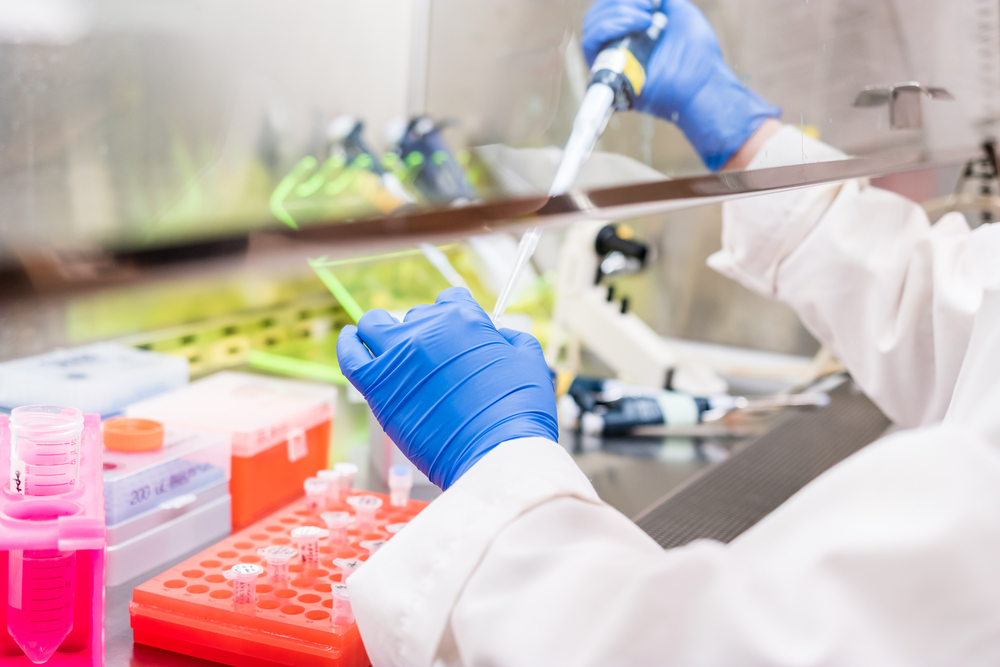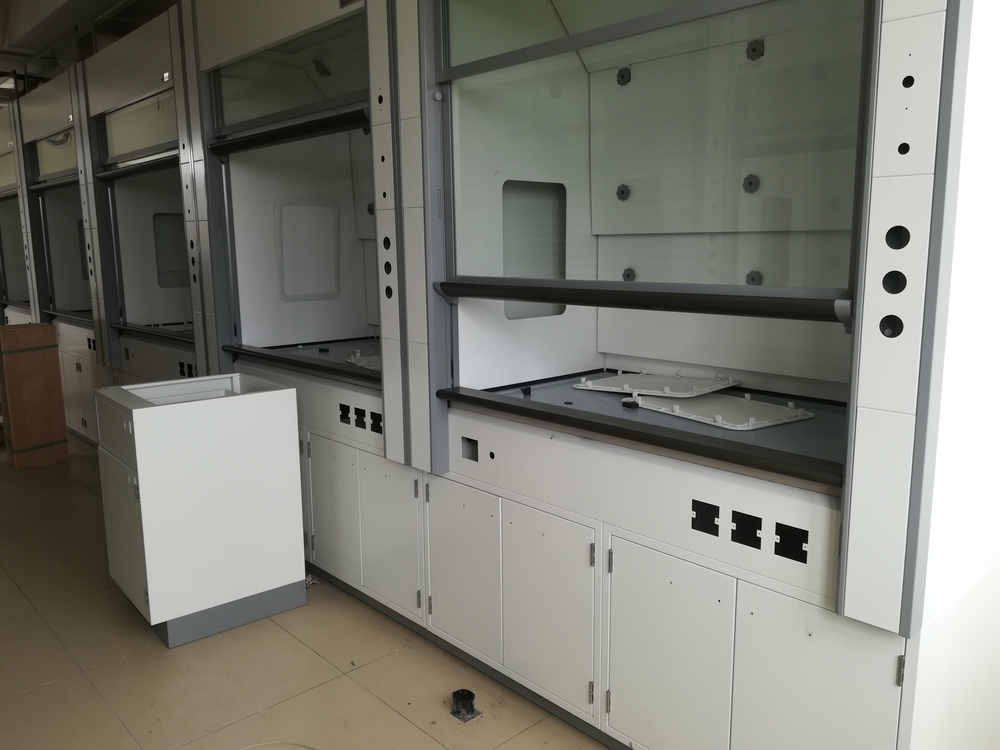At SEPS Services, we specialize in fume hood certification and testing to keep your laboratory safe, compliant, and efficient. Our team of experienced technicians provides on-demand and contract-based services, ensuring your chemical fume hoods meet all relevant standards and regulations. We provide quick turnaround times—often within 24 hours—and have replacement parts readily available to minimize equipment downtime. With our Certification Professional Management Program (CPMP), we schedule routine tests and certifications to maintain compliance for all units serviced.
Additionally, our complete range of testing procedures comply with standards, regulations and policies in place by OSHA, AIHA/ANSI, SEFA, NEBB and ASHRAE. Once complete, we’ll provide you and your lab clear, reliable results and official documentation that you can have total confidence in.
Our Service Areas:
- New York – NYC, Long Island, Mid-Hudson, Capital & Northern Regions
- New Jersey
- Connecticut
- Massachusetts
- Rhode Island
- Eastern PA

Our Approach to Fume Hood Testing
Our testing procedures are designed to ensure your fume hoods operate safely and efficiently. We follow ANSI/ASHRAE-110 standards, widely recognized as the most reliable method for certifying fume hood performance. Our team uses a combination of airflow velocity tests, smoke pattern visualization, and tracer gas containment assessments to provide precise, actionable results.
Furthermore, we also offer periodic testing, maintenance and routine inspections. These services are the surest (and simplest) way to ensure your fume hood receives complete, round-the-clock management. As a result, you can maintain confidence that your fume hood’s performance remains consistently safe and efficient.
Testing Methods and Procedures
| Test | Description | Purpose |
|---|---|---|
| Inflow Velocity Test | Measures airflow across multiple points at the fume hood face using thermal anemometers. | Ensures sufficient air is drawn into the hood without creating turbulence that could endanger the operator. |
| Smoke Pattern Visualization Test | Uses visible smoke streams to track airflow and identify obstructions or inefficiencies. | Provides a clear visual representation of the fume hood’s performance. |
| Tracer Gas Containment Test | Releases a vaporized tracer gas and measures leakage at the front of the hood using detection instruments. | Determines the containment ability and confirms that hazardous fumes remain inside the hood. |
Daily Fume Hood Checks
In addition to professional testing, daily visual inspections by lab personnel are critical. These checks should include:
- Ensuring the hood sash is clear of obstructions
- Confirming the interior surfaces are clean
- Checking for unusual noises or vibrations in the airflow system
Simple daily checks combined with annual or more frequent professional testing dramatically reduce the risk of exposure and ensure compliance.
Frequency of Fume Hood Certification
OSHA and ASHRAE guidelines recommend at least annual testing for chemical fume hoods. However, frequency should be adjusted based on factors such as:
- How often the hood is used
- Number of operators
- Type of chemicals being handled
Of course, if you have concerns about your fume hood, you should have it tested right away. However, the minimum standard (as per OSHA’s official guide to fume hood safety) is testing your unit annually, or once per year. Obviously, for a fume hood that’s seldom running, annual testing is likely sufficient. But if your fume hood is regularly in use, the more often you test it, the better.
Additionally, newly installed units should be tested before their first use. Any time a fume hood undergoes modifications, professional re-testing is advised.
Chemical fume hoods are essential to maintaining a safe and hazard-free work environment. Therefore, any employees operating your fume hood should perform a simple, brief visual examination each day before powering it on. Specifically, they should ensure there are no impediments to air flow and that the interior is clean. Neglecting to check for blockages is a common fume hood mistake it’s best to avoid if you can.
Benefits of Regular Fume Hood Testing
Investing in regular fume hood certification delivers numerous benefits, including:
- Safety Assurance: Protect your employees from exposure to toxic substances.
- Regulatory Compliance: Meet federal, state, and local standards and avoid fines.
- Early Problem Detection: Identify issues with airflow, filtration, or containment before they escalate.
- Operational Efficiency: Maintain consistent airflow and energy efficiency, preventing unnecessary lab downtime.
Our Certification Professional Management Program (CPMP)
SEPS Services offers the CPMP to simplify compliance and ensure complete lifecycle management of your fume hoods. Features include:
- Scheduled testing and certification for all serviced units
- Detailed documentation for regulatory audits
- 24-hour service response for urgent repairs
- Replacement parts readily available to minimize downtime
Common Issues Identified During Fume Hood Testing
During ASHRAE-110 testing, our technicians may detect common issues, such as:
- Improper airflow velocity or turbulence
- Obstructed exhaust paths or filters
- Faulty fan motors or damaged ductwork
- Improper sash height or misaligned components
Correcting these problems promptly is crucial to maintaining a safe lab environment.
Fume Hood Testing Procedures
When it comes to testing fume hoods at the highest level of efficiency, industry veterans (and reliable providers) will employ ANSI/ASHRAE-110 testing protocols. Basically, this is a system of testing and certifying fume hood performance.
Also, it’s universally considered the most effective and reliable testing standard for fume hoods. Ultimately, ASHRAE-110 testing methods conclusively verify fume hood performance and, as a result, your lab’s safety.
1. Inflow Velocity Test
The inflow velocity test ascertains the degree of inflow, or “face,” velocity at numerous points across the fume hood’s face. (The face is the opening which directs the lab’s air into the unit.) Also, it’s the access point in which the operator’s hands enter the work space. This test is particularly important. If inflow velocity is too high, there will be serious instability in the air between the fume hood face and the operator. And if it’s too low, then the fume hood can’t sufficiently exhaust hazardous airborne agents from the room.
The face is the area in which service providers measure the inflow velocity. ASHRAE-110 protocol dictates the use of thermal anemometers plus intricate sampling techniques in order to sharply assess velocity. Basically, this test analyzes how efficiently, and how quickly, your fume hood is drawing air inside.
2. Smoke Pattern Visualization Test
Smoke pattern visualization tests rely on smoke as a visual aid to assess a fume hood’s performance. The technician testing the fume hood discharges visible streams of smoke, of specific density and molecular volume. By releasing the smoke within the fume hood, the technician can see firsthand precisely how efficiently (or inefficiently) the unit transports air.
If something is inhibiting the air flow, they can instantly detect it and then identify the issue. These tests are one of the simplest, and most reliable, ways to make sure your fume hood is keeping your lab safe.
3. Tracer Gas Containment Test
To perform this test, technicians release a “tracer gas” (a specific vaporized agent) into the fume hood. Also, they position a leak detection instrument at the front of the hood opening.
Then, the detection instrument measures the volume of the tracer gas outside of the hood over the course of about five minutes. Basically, the tracer gas containment test provides technicians with a legitimate measurement of each fume hood’s individual containment ability.
Why Test & Certify Fume Hoods?

First and foremost, fume hoods are essential to the safety of your employees and your lab as a whole. A failure can be extremely dangerous and expose your staff to toxic airborne chemicals or pathogens. Additionally, there are numerous state and federal regulations governing fume hood operations and testing requirements to keep labs safe. Therefore, by testing and certifying your fume hood, you can keep your lab safe and adhere to all the relevant legal requirements.
In addition, testing and certification is a great way to help you identify any problems within your facility. Throughout the testing process, technicians will acknowledge potential risks or operational issues within your HVAC system or fan/filter units. Ignoring these potential issues can result in hazards within your lab, employee illnesses/absence, and a significant loss of work output. Simple measures to maintain your fume hood will ultimately provide innumerable benefits for your lab and spare you a lot of stressful setbacks.
ASHRAE-110 Compliance Advantages
ASHRAE-110 testing is globally recognized and widely used in academic, industrial, and pharmaceutical labs. Benefits include:
- Standardized performance metrics for consistent safety evaluation
- Enhanced lab efficiency and airflow management
- Reliable documentation for audits and inspections
- Identification of underlying HVAC or filtration issues
Why Choose SEPS Services for Fume Hood Certification in New York
Choosing the right provider is crucial for ensuring accurate fume hood certification. SEPS Services offers:
- Expert technicians trained in ASHRAE-110 and ANSI/OSHA protocols
- Fast, 24-hour service for urgent testing or repairs
- Comprehensive reporting and documentation for compliance
- Availability across New York and surrounding states
- Maintenance and testing under one contract to streamline operations
Get Started With SEPS Services Today
Whether you need a single unit tested, or a comprehensive management program for your entire lab, SEPS Services provides the experience, speed, and reliability you need. Our team ensures your fume hoods remain compliant, safe, and fully operational. Schedule your fume hood certification in New York today and take the first step toward safer laboratory operations.
Frequently Asked Questions (FAQs)
How often should a fume hood be tested?
Fume hoods should be tested at least annually according to OSHA guidelines. Frequency may increase depending on usage levels, number of operators, and chemicals handled. High-use labs may require testing every 3–6 months.
What is ASHRAE-110 testing?
ASHRAE-110 is the standard protocol for testing and certifying chemical fume hood performance. It includes inflow velocity, smoke pattern visualization, and tracer gas containment tests to ensure proper airflow and safety.
Can SEPS Services perform urgent fume hood certification?
Yes. SEPS Services provides service within 24 hours for urgent testing, repairs, or certification needs, minimizing equipment downtime and maintaining lab safety.
What areas do you service in New York?
We provide fume hood testing and certification throughout New York, including NYC, Long Island, Mid-Hudson, Capital & Northern regions, as well as neighboring states like New Jersey, Connecticut, Massachusetts, Rhode Island, and Eastern Pennsylvania.
Do you offer ongoing maintenance programs?
Yes. Our Certification Professional Management Program (CPMP) provides scheduled testing, certification, maintenance, and reporting to ensure your fume hoods remain compliant and operational year-round.